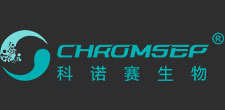Application of Superporous Filler in Purification of Virus-like Particles (VLP) Vaccine
As a promising vector tool, VLP has been widely used in gene therapy, vaccine development and diagnosis. Compared with traditional vaccines, VLP vaccines have higher safety and better immune effect. In the large-scale production of VLP vaccine, downstream chromatography plays a crucial role in the stability, safety and efficacy of the final product.
What makes VLP special
VLP (Virus Like Particle) is a small particle of nanometer size formed by automatic assembly of one or more capsid protein components. VLP particles are self-assembled from virus capsid proteins and do not contain virus genome. This special spatial structure can strongly stimulate human immune system and effectively induce immune protection response. Its advantages are as follows:
High safety: VLP does not contain replicase and nucleic acid encoding virus structural protein, lacks replication ability, will not be infectious, and its safety is guaranteed;
Good immune effect: VLP, as an antigen with a size of 40 - 200nm, can be rapidly excreted into lymph nodes (LNs) and interact with antigen presenting cells (APCs) and B cells to effectively stimulate B cells and T cell responses.
Diversity of expression systems: Escherichia coli, yeast, mammalian cells, insect cells and plants and other expression systems can be used to express VLP.
Mature technology and commercialization: According to literature, vaccines based on VLP virus-like particles currently on the market include bivalent, tetravalent and nine-valent human papillomavirus (HPV) vaccines, hepatitis B virus (HBV) vaccines, hepatitis E virus (HEV) vaccines and malaria vaccines. More VLP based vaccine candidates are undergoing preclinical and clinical trials.
Envelope structure of VLP
VLP is mainly divided into eVLP and non-enveloped VLP. The biggest difference between the two is whether there is an envelope outside the protein capsid.
Non-enveloped VLP: A relatively simple VLP consisting of a single or multiple capsid proteins that can be expressed in prokaryotic and lower eukaryotic systems, such as hepatitis E virus, HPV virus, hand-foot-mouth virus.
Envelope VLP (eVLP): Encapsulated in a matrix form in a lipid membrane containing glycoproteins derived from the host, the structure is complex, difficult to construct, but more designable. Usually expressed in eukaryotic expression systems, several structural proteins need to be co-expressed for intracellular self-assembly processes. For example: hepatitis B virus, influenza virus, coronavirus.

Challenges in VLP vaccine purification
Although VLP vaccine has obvious advantages and huge market potential, it still has some limitations and difficulties, especially in product purification. The host cell-derived membrane of VLP can integrate antigen and adjuvant, and at the same time, there are many host cell impurities related to the process, and the product yield is low.(Especially coated VLP), coupled with the pressure of shortening the time to market and high development costs, all led to insufficient process development to a certain extent, which brought great challenges to downstream process development.
At present, most of the purification processes available on the market use common chromatographic media, which have certain limitations more or less.

Compared with other biomolecules, VLP virus particles are characterized by large particle structure of polysubunits and larger molecular size (diameter 20~800nm), ordinary agarose microspheres and polymer microspheres have small pore size, virus particles can not effectively enter the interior of the microspheres, resulting in low binding load, while narrow pore size will lead to diffusion through, slow transmission speed, low processing capacity, long time consumption, and will destroy the structure of virus particles to depolymerize, reduce activity, thus affecting the recovery rate.
After sufficient market research, Konosay focused on the difficulties in VLP purification, combined with its own ultra-large pore chromatography separation technology (pore diameter greater than 200nm), proposed a solution for VLP purification, and successfully applied it to solve the problem for customers.
VLP vaccine purification recommendations
Main lines of purification strategy-clarification, capture, purification and purity.
After harvesting and lysing cells, clarification is required to ensure removal of contaminated cell debris and aggregates. In order to obtain complete and purer VLP, further purification is needed.
There are different purification strategies for downstream purification of virus-like particles VLP due to different expression systems. Crystto Shell 700 / 400 complex mode chromatography media and MoSphere 50V Q / DEAE ultra-large porous chromatography media occupy the dominant position in the development of VLP purification process due to their unique structural characteristics.
VLP particle size is larger, priority is given to Crysto Shell 700, VLP particle size is smaller, priority is given to Crysto Shell 400, specific needs to balance the yield and purity according to the test results to comprehensively consider.
MoSphere 50V Q / DEAE is the best medium for purification because of the large size of virus particles.
VLP Purification Protocol I
Step ① Compound mode chromatography purification:
Crystto Shell 700 / 400 (anion exchange and hydrophobic dual function) complex mode chromatography medium is used to adsorb host cell impurities. VLP has a large molecular weight and is directly passed through. This step can remove 85% of host proteins.
PS: Crysto Shell has a smaller pore size than Capto Core to ensure recovery.
Step 2 Ion exchange chromatography purification:
Purification was performed using MoSphere 50V Q / DEAE ultra-large pore anion exchange chromatography medium.

VLP Purification Scheme II
Step ① Compound mode chromatography purification:
AdMix Chromrose FF (anion exchange and hydrophobic dual function) complex mode chromatography medium is used to adsorb host cell impurities. VLP molecules are large and exclude direct flow through. This step can remove 80% of host proteins. (VLP particle size>80nm)
Step 2 Ion exchange chromatography purification:
Purification was performed using MoSphere 50V Q / DEAE ultra-large pore anion exchange chromatography medium.
PS: This option is cheaper than [Option 1] and can be used as a cost-saving alternative.

Coated VLP purification application case
Project Background: The customer sample is an enveloped virus antigen VLP vaccine. Many fillers screened in the market cannot meet the requirements. Only an imported brand of strong anionic medium can meet the binding requirements. There is no flow through, but the load is relatively low. After the customer replaced Kono super porous ion exchange medium, in the case of high salt, not only the combination is good, but also the loading capacity is improved, which can completely realize the localization of packing replacement.
Kono Products: MoSphere 50V Q Ultra-large pore anion exchange media
Project progress: pilot test.

Test results:
MoSphere 50V Q ultra-large pore ion exchange medium was used, and no flow breakthrough occurred under high salt condition.
VLP vaccine purification protocols are more than these, and VLP from the same family of viruses may have complex surface characteristics. For example, different strains of influenza VLP have differences in surface antigens, which requires adjusting purification strategies to local conditions.
In summary, Kono's MoSphere 50 series ultra-large pore chromatography media are essential and one of the most efficient separation vectors in the downstream purification process of viral particle (VLP) vaccines.
Products that match market demand are valuable
Konosay's ultra-large pore filler has been widely used in the separation and purification of viruses, VLP, AAV vectors, plasmids, exosomes, mRNA and ultra-large protein molecules, and fully demonstrated its superiority in purification, successfully helping customers solve purification problems one by one, and effectively helping customers achieve cost reduction and efficiency.






